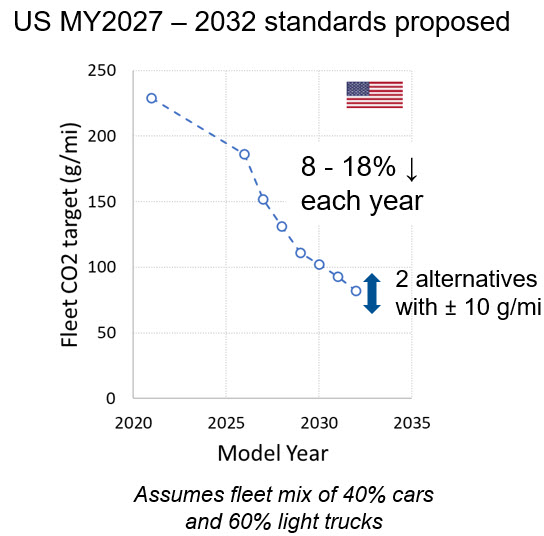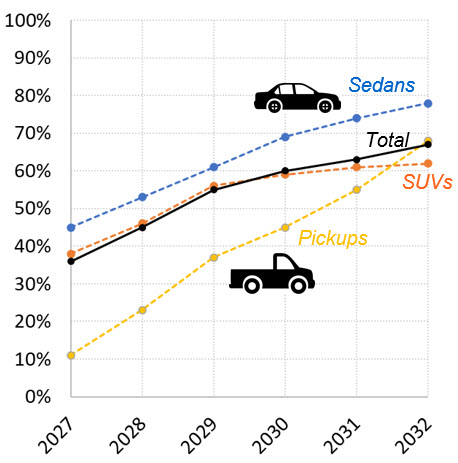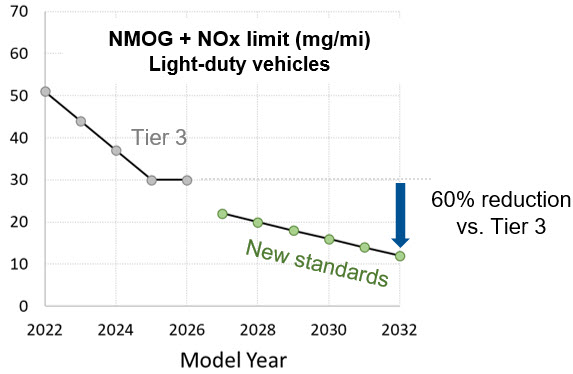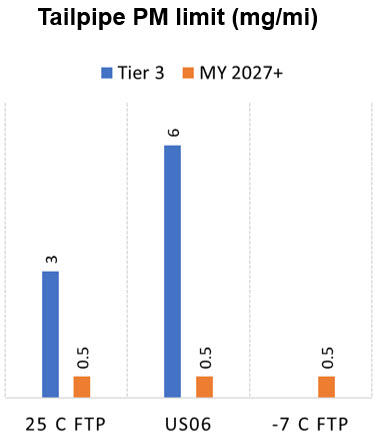U.S. EPA Proposal for MY2027+ Light- and Medium-Duty Vehicles
For light-duty vehicles – From 2027 to 2032, 45% reduction in CO2 emissions, 60% reduction in NMOG + NOx, and PM limit reduced to GPF-enforcing 0.5 mg/mi.
On April 12th 2023, the U.S. EPA published a proposal to further reduce greenhouse gas and criteria pollutant emissions from light- and medium-duty vehicles beyond model year 2027.
Here is a summary of this “multi-pollutant” regulatory proposal.
This is a 700+ page proposal, with much more details than can be posted here. Download the summary document for more details.
Vehicles covered in this regulation
The proposal covers light- and medium-duty vehicles, and the graphic below summarizes the vehicle classification. Note that the medium-duty is a new category, which was previously covered by Class 2b and 3 vehicles in the heavy-duty rule. Also note that medium-duty passenger vehicles in the 8,501 – 10,000 lbs. category are excluded from the medium-duty (they fall under light-duty).

CO2 standards
The proposed rule reduces CO2 emissions by 45% over 2027 through 2032, with annual reductions of 8 – 18% each year (higher reductions in the earlier years). Two other alternatives are provided, one weaker and one stronger, resulting in an increase or decrease, respectively of CO2 emissions by 10 g/mi by 2032. See the downloadable report for more details on the footprint curves.
The EPA has estimated the market penetration of battery electric vehicles that would be required to meet the standards. Note that the standards are technology neutral and can be met through a combination of all propulsion technologies (hybrids, improved ICEs, BEVs, …)

Projected ZEV Market Share

NMOG + NOx standards
The proposed rule reducesNMOG + NOx emissions by 60% over 2027 through 2032, resulting in a fleet averaged target of 12 mg/mi by 2032. These are mostly expected to be met using reduced fuel consumption and electrification, such that ICE-only tailpipe emissions are expected to remain at the Tier 3 phased in value of 30 mg/mi.

PM standards
The proposed rule reduces the individual (not fleet-averaged) PM emissions limit from the Tier 3 value of 3 mg/mi to 0.5 mg/mi, while requiring that it be met over the FTP and US06 cycles and also over the FTP cycle at – 7 C. This is expected to be GPF-enforcing, bringing the US in alignment with Europe and China where this technology has been introduced for the past several years.

Much more ..
This is a 700+ page proposal, with much more details than can be posted here. Download the summary document for more details.
Sign up here to receive such summaries and a monthly newsletter highlighting the latest developments in transport decarbonization
5-Min Monthly
Sign-up to receive newsletter via email
Thank you!
You have successfully joined our subscriber list.
